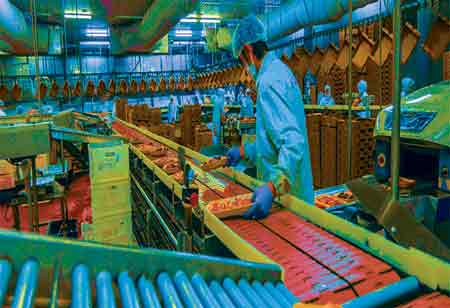Thank you for Subscribing to Food Business Review Weekly Brief
Emerging Trends Shaping the Food and Beverage Industry
In the modern, interconnected world, the food and beverage industry is witnessing a profound transformation

By
Food Business Review | Thursday, June 27, 2024
Stay ahead of the industry with exclusive feature stories on the top companies, expert insights and the latest news delivered straight to your inbox. Subscribe today.

The food and beverage industry is evolving, reshaping ordering methods and customized dietary plans. A global culinary voyage is underway as consumers seek genuine tastes and varied cuisines, stimulating businesses to pioneer inventive international fusion creations.
FREMONT, CA: In the modern, interconnected world, the food and beverage industry is witnessing a profound transformation driven by consumer demands and technological innovations. Emerging trends are reshaping every aspect of the industry, from sustainability practices to integrating advanced technologies. This evolution meets market demands with the essence of food production and consumption.
The latest technological trends include:
Internet of Things (IoT): Smart sensors and shelves streamline property and stock management, minimizing waste and optimizing procurement. This real-time connectivity transforms how physical and digital technologies interact, shaping the industry's future.
Automation: Automated systems tackle repetitive tasks like packaging, sorting, and assembly, reducing labor costs and boosting productivity. They enable precise control over processes, ensuring consistency and quality in food products.
Artificial Intelligence (AI): AI optimizes processes in the food industry by leveraging advanced algorithms. It enhances supply chain management, quality control, personalized nutrition, recipe generation, waste reduction, and customer experience. AI improves efficiency, ensures product safety and quality, promotes healthier eating habits, fosters innovation, minimizes waste, and provides personalized customer support.
Machine Learning: A personalized recommendation that analyzes customer preferences and purchase history to predict individual tastes, enhance customer satisfaction, and drive sales through tailored suggestions. It optimizes inventory management by forecasting demand patterns, minimizing waste, and ensuring efficient stocking levels.
Augmented Reality (AR) and Virtual Reality (VR): Technologies are reshaping consumer engagement and experiences in the food and beverage sector, offering innovative methods for presenting products and educating consumers. The VR technologies offer menu displays where customers can visualize dining dishes in 3D before ordering. AR applications can provide real-time nutritional information when scanning food items, helping consumers to make healthier choices.
Data Analytics: Enables the analysis of consumer preferences, market trends, and operational performance and tailors product offerings and marketing strategies to meet customers' evolving needs. It also identifies popular menu items and seasonal trends, allowing restaurants to adjust their menus accordingly and make data-driven decisions that drive profitability and customer satisfaction.
Sustainable Technologies: The food and beverage industry minimizes environmental impact by adopting eco-conscious practices, ensuring long-term sustainability and profitability. Renewable energy sources like solar and wind power reduce carbon emissions. Waste reduction initiatives minimize landfill waste, and after-conservation technologies optimize water usage, preserving this vital resource and reducing operational costs.
Blockchain Technology: Blockchain is transforming supply chain management in the food and beverage industry. By providing an immutable record of transactions, blockchain enables consumers to trace the journey of their food from farm to table, ensuring authenticity and quality while also helping to prevent food fraud and contamination incidents.
Ordering and Payments: Mobile apps allow individuals to browse menus, place orders, and complete payments directly from their smartphones, reducing wait times and enhancing overall service efficiency. Businesses can integrate widely used payment solutions or develop customized apps to elevate sales and align with evolving customer preferences.
The technologies are modernizing the trajectory of the food and beverage industry by bolstering operational efficiency and fostering a culture of innovation essential for maintaining competitiveness in today’s market. Through strategically integrating these technologies, businesses cater to evolving consumer preferences and establish a foundation for sustainable growth and distinctive market positioning in an interconnected global landscape.






